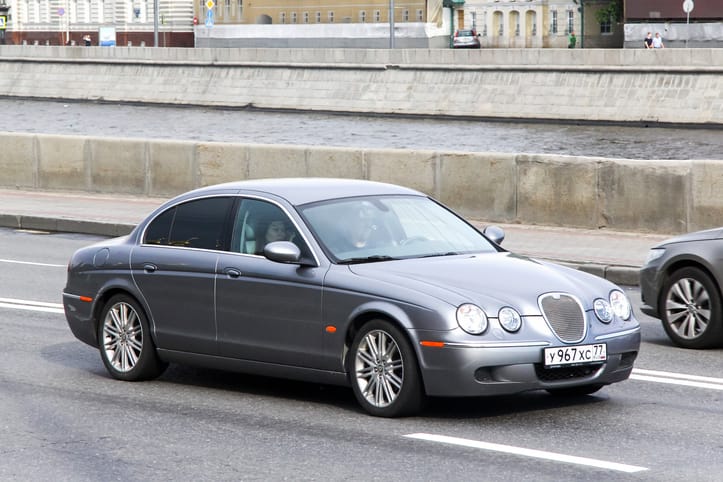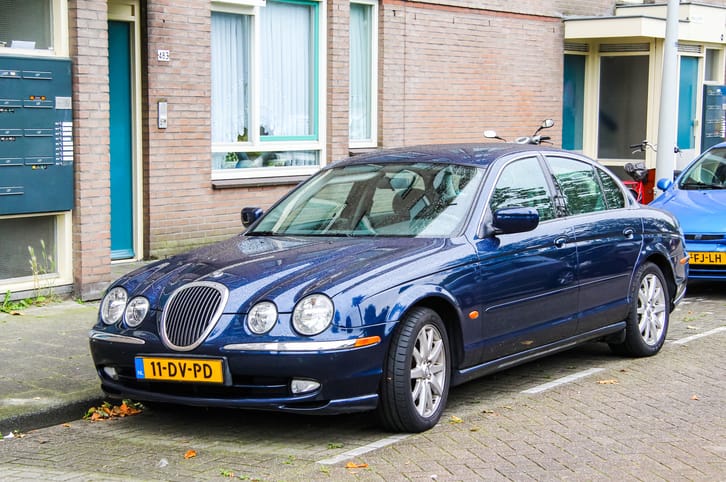The Jaguar S-TYPE: A Tale of Two Eras

The Jaguar S-TYPE occupies a unique space in the British automaker's history. Produced across two distinct generations from 1999 to 2007, the S-TYPE embodied contrasting design philosophies and targeted different segments of the luxury car market. This article delves into the story of the S-TYPE, exploring its design evolution, performance offerings, and the reasons behind its eventual discontinuation.
The First S-TYPE: A Retro Revival (1999-2002)
The first iteration of the S-TYPE, launched in 1999, surprised many. Jaguar, known for its sleek and contemporary designs, presented a car that harkened back to its past. The S-TYPE's design drew inspiration from the iconic Jaguar Mark 2, a 1950s and 60s sports sedan. The rounded headlights, broad grille, and short rear deck gave the S-TYPE a retro-chic aesthetic that resonated with a specific audience.
Under the hood, the first S-TYPE offered a choice of two V6 engines: a 3.0L and a powerful 4.0L. Both engines delivered a satisfying blend of power and refinement, perfectly suited for a luxury sedan. The driving experience prioritized comfort over outright sportiness, with a focus on a smooth ride and luxurious feel.
However, the first S-TYPE wasn't without its shortcomings. Critics pointed out that the interior design, while undeniably luxurious, felt somewhat dated compared to rivals like the BMW 5 Series and Mercedes-Benz E-Class. Additionally, some reviewers felt the handling, while comfortable, lacked the dynamic edge expected from a Jaguar.
A Modern Transformation (2003-2007)
In 2003, Jaguar significantly revamped the S-TYPE. The retro-inspired design was replaced with a more modern and aggressive look. The headlights became sharper, the lines became more sculpted, and the overall silhouette adopted a sleeker, more aerodynamic profile. This transformation brought the S-TYPE in line with its contemporary rivals and showcased Jaguar's design capabilities.
The engine options also saw an upgrade. The 3.0L V6 remained, but a new 4.2L V8 engine was introduced, offering significantly more power and performance. For those seeking an even more exhilarating experience, the S-TYPE R arrived in 2004. This high-performance variant boasted a supercharged V8 engine, capable of accelerating from 0 to 60 mph in a thrilling 5 seconds.
The interior of the revamped S-TYPE also received a significant overhaul. The design became more modern and driver-oriented, featuring higher quality materials and improved ergonomics. Technology features like a navigation system and a premium sound system were also incorporated, enhancing the overall driving experience.
The End of an Era
Despite the successful modernization effort, the S-TYPE's sales figures never quite reached the levels Jaguar had hoped for. The competition from established German luxury brands remained fierce, and the S-TYPE struggled to carve out a distinct niche in the market. Additionally, the rise of SUVs as the preferred choice for luxury car buyers further eroded the S-TYPE's market share.

In 2007, Jaguar made the decision to discontinue the S-TYPE. The XF, a new mid-size luxury sedan with a focus on sportiness and technology, was launched as its replacement. The XF offered a more contemporary design and a wider range of engine options, catering to the evolving preferences of luxury car buyers.
The Legacy of the S-TYPE
The Jaguar S-TYPE's story is one of two distinct chapters. The first chapter was a nostalgic homage to Jaguar's heritage, offering a luxurious and comfortable driving experience. The second chapter was a bold attempt to modernize the S-TYPE and compete directly with established rivals. While commercially unsuccessful, the S-TYPE left its mark with its unique design language and powerful performance variants, particularly the S-TYPE R.
Today, the S-TYPE enjoys a cult following among enthusiasts who appreciate its blend of classic Jaguar design elements with modern features. Used S-TYPEs offer a compelling option for those seeking a luxurious and powerful sedan at an attractive price point. However, potential buyers should be aware of the potential for higher maintenance costs associated with a premium European car.
In conclusion, the Jaguar S-TYPE's place in automotive history is secure. It represents a unique chapter in Jaguar's design evolution and serves as a reminder of the brand's ability to blend heritage with modern innovation. Whether you admire the retro-chic charm of the first generation or the sleek power of the second, the S-TYPE remains a captivating car with a story to tell.
